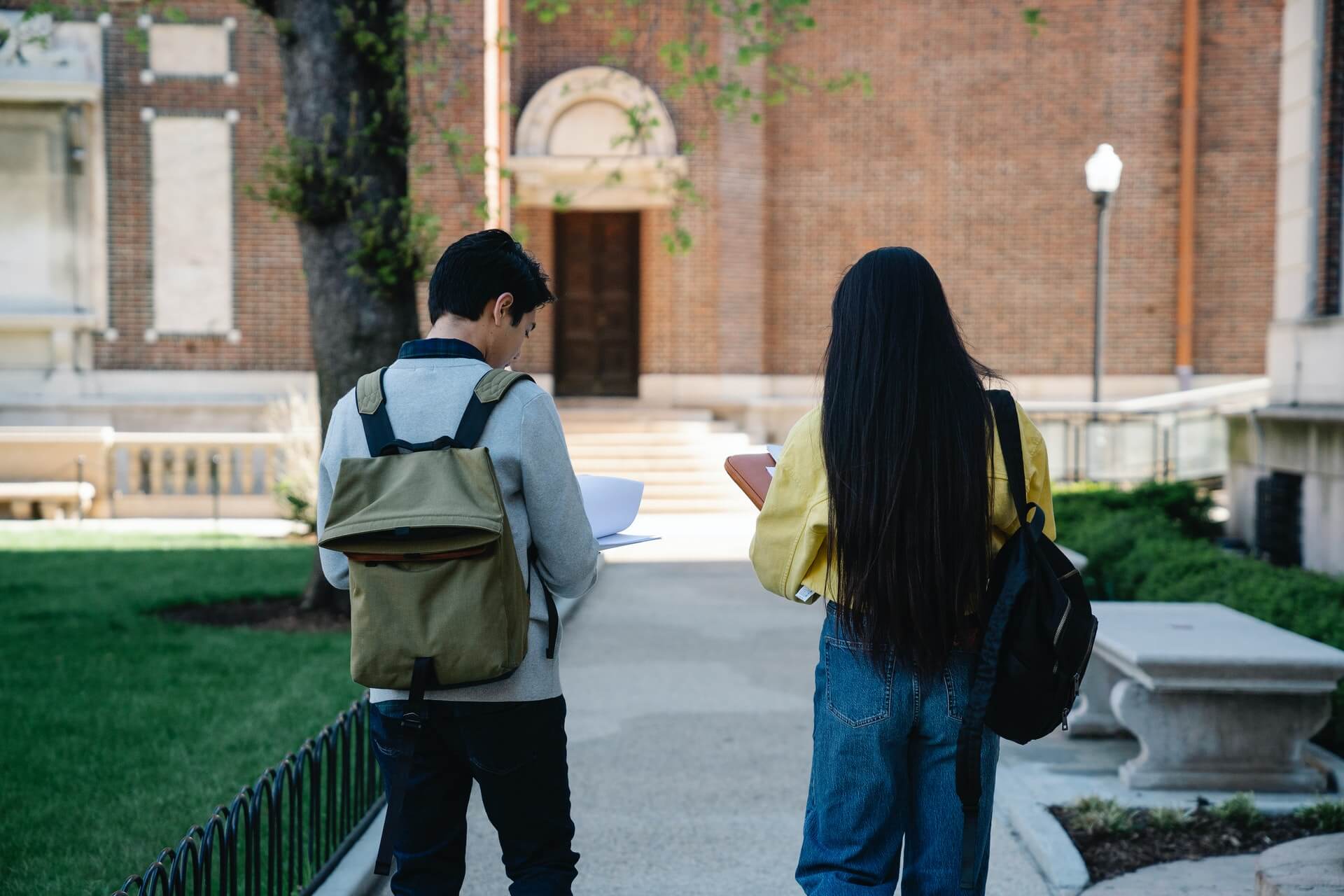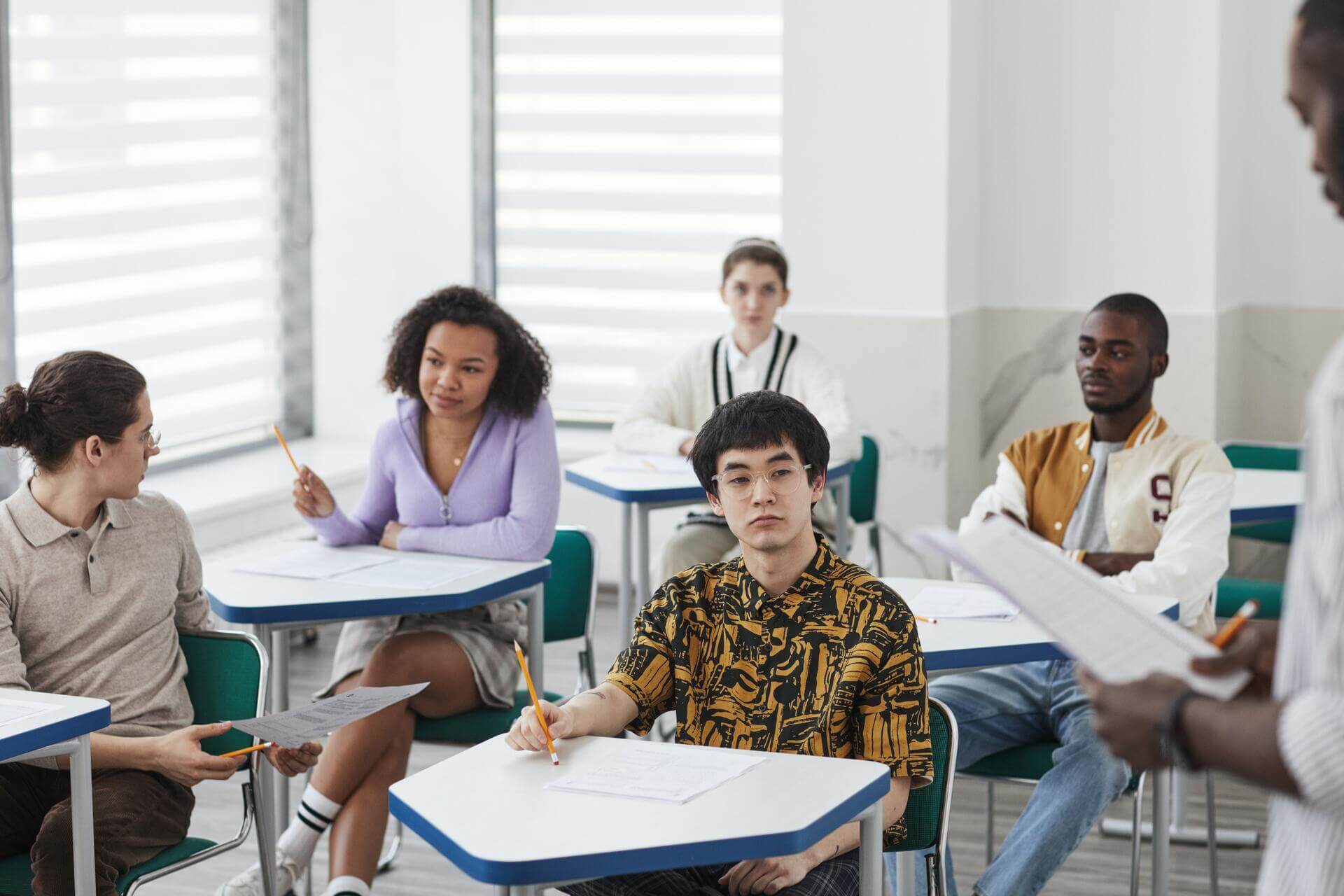Six Characteristics of a Highly Effective High School
What makes an effective high school? It’s not just the most obvious markers, like graduation rates…

What makes an effective high school? It’s not just the most obvious markers, like graduation rates and test scores. While these metrics matter, the best high schools go further, preparing students for success in college, career, and real life after graduation.
This kind of preparation takes creativity and bold thinking. It takes the ambition to see beyond current patterns and limitations to envision what’s possible. While no two high schools are the same, the most effective schools tend to take a similar approach to imagining what high school can be for their community. We’ve defined this approach through our six XQ Design Principles:
- Strong mission and culture
- Meaningful, engaged learning
- Caring, trusting relationships
- Youth voice and choice
- Smart use of time, space, and tech
- Community partnerships
Schools that take this approach to high school share some traits in common. We see these characteristics modeled across the XQ schools, each of which uses the XQ Design Principles in their work to rethink high school. Explore these six characteristics of highly effective schools to see what commitment to students looks like in action.

1. Clear Shared Vision
Effective high schools have a clear vision for their work. This vision unites the community in shared purpose, and gives school staff a framework to measure their success and hold themselves accountable to their goals.
Washington Leadership Academy—an XQ school in Washington, D.C.—embodies this emphasis on clear vision. WLA came to be when a group of teachers, parents, students, and community leaders came together to imagine a school with a strong mission and culture that would empower D.C. students. Together, they came up with a clear and specific vision: to build a school with technology at its core that prepares young people for lives of leadership and positive change.
Now, all programming at WLA emanates from this vision. All WLA students take four years of computer science, and all students pursue internships, putting their academic skills to use in their community. And this vision yields results. WLA has set records in D.C. for the number of girls and students of color taking and passing the AP Computer Science Exam, and WLA graduates have gone on to become leaders and changemakers—like Jerome Foster II, an environmental activist who serves on the White House Environmental Justice Advisory Council.
2. Innovative Learning Practices
At highly effective schools, educators aren’t satisfied with doing things the way they’ve always been done—especially when it comes to learning. Instead, they strive to facilitate meaningful, engaged learning, challenging students to think deeply about issues that matter. To achieve this, teachers at effective schools invest in innovative learning practices. At highly effective schools, learning is:
- Project based: Students gain knowledge and skills through solving authentic challenges
- Student centered: Students have a say in what and how they learn
- Interdisciplinary: Projects combine multiple subjects areas, asking students to draw connections
- Competency based: Students progress through content based on mastery, not time spent in seats
At Crosstown High—an XQ school in Memphis, TN—this focus on innovative learning practices is built into the school’s very design. Crosstown is co-located in Crosstown Concourse with over 40 other community organizations, including business and nonprofits. Students at Crosstown use these resources to learn through doing projects they’re passionate about—like putting together a young-voter registration campaign, or designing a virtual reality experience to simulate drunk driving. Through these projects, students internalize core academic skills through applying them to real-world challenges.
3. Culture of Care and Support
Students learn best when they feel like they belong and like they feel seen. Effective high schools facilitate caring, trusting relationships between adults and students to create an overall culture of care and support. In these schools, every student has a close relationship with at least one adult, and teachers emphasize social and emotional learning—like self-care, communication, and conflict resolution—to strengthen the community as a whole.
Teachers at highly effective schools develop this trust and care with all students through culturally responsive teaching. In culturally responsive teaching, educators bring students’ own knowledge, identities, and histories into the classroom. This means centering students’ culture at every level: from curriculum content, to the images and quotes on classroom walls. These practices engage students and deepen learning.
Highly effective schools also center equity in their culture, ensuring that every student gets what they need for success. At Da Vinci RISE High, an XQ school in Los Angeles, CA that serves students experiencing homelessness, foster care, and incarceration, equity is at the core of student care and support. Through flexible scheduling, multiple locations, and a robust support system of advisors and academic coaches, RISE educators build consistent and personalized relationships with students experiencing high degrees of instability. As a result, 90 percent of foster and homeless students return to RISE each year.
4. High Levels of Student Leadership
When students have a say in what and how they learn, engagement increases. It’s no surprise, then, that the most effective schools create opportunities for youth voice and choice, resulting in high levels of student leadership. At effective high schools, students have agency and autonomy over their own learning, and have a say in important school decisions.
For example, at Elizabethton High—an XQ school in Elizabethton, TN—students help make decisions about issues that matter. Case in point: how to spend funding from the American Rescue Plan. Students worked directly with the school principal and district superintendent to direct spending, including increasing school counselors and mental health supports. Through this leadership experience, students gained valuable real-life budget and decision-making skills, and the school was able to implement changes they hadn’t considered before.
5. Culture of Constant Learning
Highly effective schools stay effective by engaging in constant learning and reflection. Teachers and school leaders embrace data and student feedback to evaluate learning, and improve their craft through collaboration and professional development. They take stock of how every aspect of the school—including time, space, and technology—can be put to use in the service of learning.
Trinity Academy for the Performing Arts—an XQ school in Providence, RI—exemplifies this culture of constant learning. Recognizing that they were falling short in academics, teachers and leaders at the school analyzed nine years worth of student data to identify patterns and weak spots. They adopted a new, state-standards-aligned curriculum that brings high academic rigor to their school-wide focus on art. Throughout this process, staff didn’t shy away from hard conversations—instead, they leaned into them, identifying problems so they could articulate solutions.
6. Sustained Relationships with the Community
High schools exist within communities, and these communities offer valuable resources for students. The most effective high schools leverage these resources for students by forming community partnerships that lead to lasting relationships.
Through these relationships with families, businesses, and nonprofits, schools can serve the needs of the community and connect students with opportunities like job experience, mentorship, and real-life projects. Some examples of sustained relationships with the community include:
- The role of families in decision-making at Brooklyn Laboratory High School, an XQ school in Brooklyn, NY
- Elizabethton High School’s partnership with virtual reality firm Lobaki
- The community garden at Furr High School, an XQ school in Houston, TX
Maybe the best metric for the effectiveness of a high school is how students feel when they graduate. Upon graduating from high school and preparing to start college, Washington Leadership Academy student De’Von described himself as “probably more prepared than any other kid in America.” Join us in our work to ensure this kind of transformative high school experience for all students.









